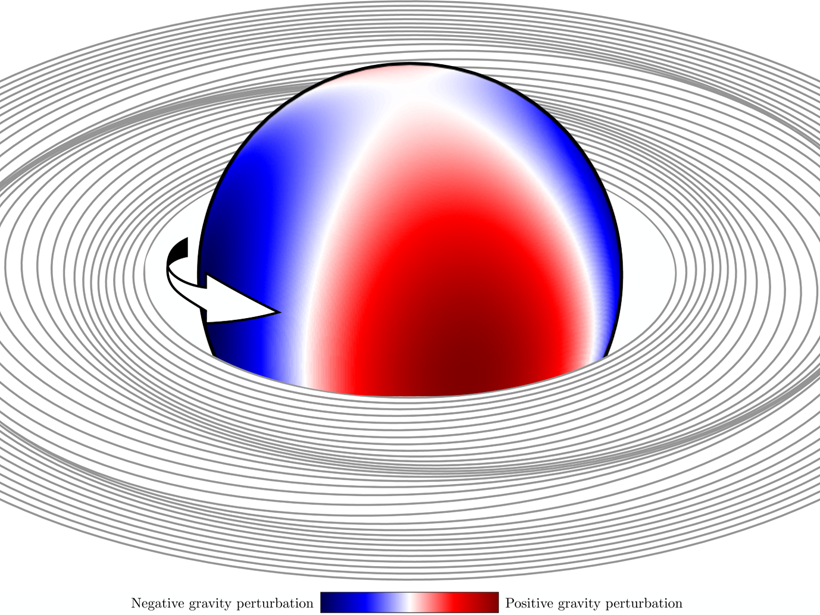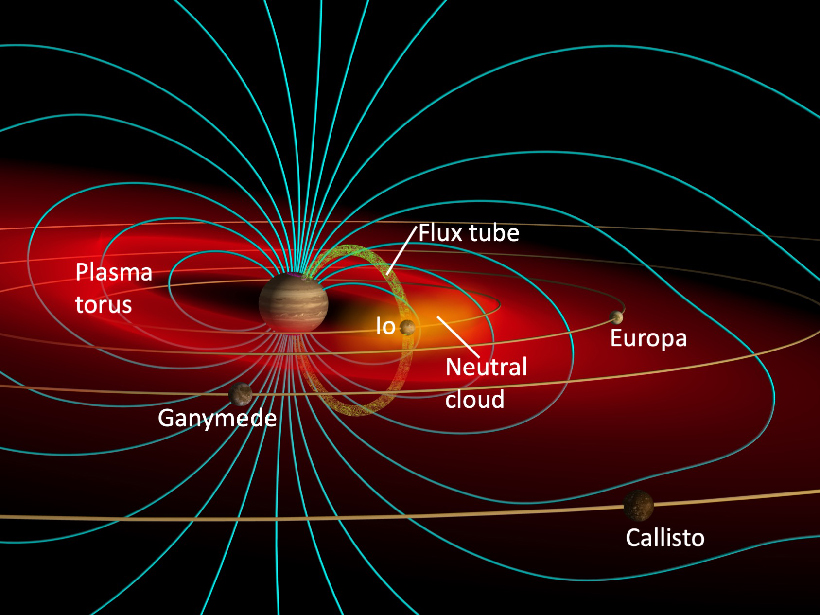Terrestrial caves offer scientific and engineering insights and serve as testing grounds for future forays by humans and robots into caves on other worlds.
moons
On Thin Ice: Tiger Stripes on Enceladus
Saturn’s moon Enceladus boasts fierce tiger stripes around its south pole, a mystery that has long puzzled scientists. New research explores the stripes by examining how the moon’s ice breaks.
Jupiter’s Ocean Moons Raise Tidal Waves on One Another
New research considers the effect of Jupiter’s Galilean moons on each other’s oceans for the first time.
Electron Density near Enceladus Shows Orbital Variation
The electron density peaks well after the activity of the moon’s distinctive south polar ice plume reaches its maximum, but the cause of the lag remains puzzling.
Using Saturn’s Rings as a Seismometer
The Cassini spacecraft observed spiral density waves in the rings of Saturn which can be used to probe its interior structure and rotation.
Two Moons and a Magnetosphere
Decades of research have illuminated how Io and Europa shape—and are shaped by—Jupiter’s giant magnetosphere.
Jupiter’s Galilean Moons May Have Formed Slowly
A new model is the first to simultaneously explain many of the moons’ characteristics, including their mass, orbits, and icy composition
No Underground Magma Ocean on Jupiter’s Fiery Moon?
A new study suggests alternative explanations for Io’s unusual magnetic field.
New Tiny Moon of Neptune Discovered
The moon’s size and orbit point to it being the remnant of a collision with Neptune’s moon Proteus.
New Hints About How Martian Moons Formed
A new study finds that Phobos includes chunks of Martian crust.










